 1984 Volkswagen Golf II (3-door) Dimensions, Size & Specs
1984 Volkswagen Golf II (3-door) Dimensions, Size & SpecsMeasurements of the 1984 Volkswagen Golf II, engineered for optimal performance and comfort
| Dimensions | |
|---|---|
| Length: | 3985 mm156.9 in13.1 ft |
| Width: | 1665-1680 mm65.6-66.1 in5.5-5.5 ft |
| Height: | 1405-1415 mm55.3-55.7 in4.6-4.6 ft |
| Ground Clearance: | 120 mm4.7 in0.4 ft |
| Trunk Capacity: | 230-345 liter8.1-12.2 cu ft |
| Trunk Capacity (Max): | 1030-1145 liter36.4-40.4 cu ft |
| Weight Specifications | |
| Curb Weight: | 845-1050 kg1863-2315 lbs |
| Maximal permitted Weight: | 1360-1540 kg2998-3395 lbs |
| Tire Specifications | |
| Rims Sizes: | 13-inch rims:
|
| Tire Sizes: |
|
The Volkswagen Golf II (3-door), produced from 1983 to 1987 with the 1984 model year as a key reference, represents a classic compact hatchback that played a significant role in the evolution of small family cars. This generation of the Golf expanded on the success of its predecessor with improved design, practicality, and refined engineering, making it a popular choice for urban and suburban drivers.
Measuring 3985 mm (157 inches) in length, the Golf II maintained a compact footprint ideal for maneuvering in tight city environments while providing enough interior space for practicality. Its width ranges between 1665 and 1680 mm (65.6 to 66.1 inches), with a height varying from 1405 to 1415 mm (55.3 to 55.7 inches), which allowed for a low and aerodynamic profile typical of hatchbacks from that era.
Weighing between 845 and 1050 kg (1864 to 2315 lbs) in curb weight, it offered a good balance between lightweight agility and sturdy construction. The maximum allowable weight varied from 1360 to 1540 kg (2998 to 3397 lbs), ensuring a robust structure capable of carrying passengers and cargo effectively. Ground clearance was modest at 120 mm (4.7 inches), contributing to the car’s responsive handling and stable ride.
One of the defining features of the Golf II was its versatile luggage capacity. With the rear seats upright, it provided between 230 and 345 liters (8.1 to 12.2 cubic feet) of trunk space, suitable for everyday errands and small trips. Folding down the rear seats expanded the cargo area substantially, offering between 1030 and 1145 liters (36.4 to 40.4 cubic feet), thus accommodating larger items and enhancing its usability for families and outdoor enthusiasts alike.
The Golf II supported multiple wheel and tire packages, including rim sizes of 5J x 13, 5.5J x 13, and 6.5J x 15 inches, and tire sizes ranging from 155/65 R13 to 175/70 R13 and 185/55 R15. This variety allowed customization for different driving preferences, balancing comfort, and performance.
Overall, the Volkswagen Golf II (3-door) from the mid-1980s stands out as a compact hatchback that combined efficient use of space, practical design, and nimble handling. It remains an iconic vehicle for enthusiasts and practical drivers alike, illustrating Volkswagen's commitment to producing reliable and versatile small cars.
Discover the standout features that make the 1984 Volkswagen Golf II a leader in its class
Have a question? Please check our knowledgebase first.
The Volkswagen Golf II (3-door) from 1984 measures 3985 mm (approximately 157 inches) in length, making it a compact hatchback suitable for urban and suburban driving. The width varies slightly between 1665 mm to 1680 mm (about 65.6 to 66.1 inches), allowing for a balance between interior space and ease of maneuverability. The height ranges from 1405 mm to 1415 mm (roughly 55.3 to 55.7 inches), providing a relatively low profile that enhances aerodynamic efficiency while still offering adequate headroom for passengers.
The curb weight of the Volkswagen Golf II (3-door) ranges from 845 kg to 1050 kg (approximately 1863 to 2315 pounds), depending on the specific trim and equipment. A lighter curb weight typically contributes to improved acceleration, fuel efficiency, and handling. Variations in weight come from differences in engine options, trim levels, and additional features. The lighter models offer more agile driving dynamics, while the heavier ones may provide enhanced stability and comfort at the expense of some fuel economy.
The maximum permissible weight (gross vehicle weight) of the Volkswagen Golf II ranges from 1360 kg to 1540 kg (about 2998 to 3397 pounds). This figure includes the vehicle's curb weight plus passengers, cargo, and any additional equipment. The maximum weight capacity directly impacts how much load the vehicle can safely carry without compromising handling, braking, and safety. For practical purposes, this means the Golf II can accommodate moderate passenger and luggage weight but is not designed for heavy towing or carrying extremely heavy loads.
The Volkswagen Golf II offers a luggage capacity of 230 to 345 liters (8.1 to 12.2 cubic feet) with the rear seats in their standard upright position. When the rear seats are folded down, the capacity significantly expands to between 1030 and 1145 liters (36.4 to 40.4 cubic feet). This range of cargo volume makes the Golf II quite practical for everyday tasks, such as grocery shopping, carrying sports equipment, or small-scale moving needs. Its flexibility enhances usability for a compact hatchback, balancing passenger comfort with cargo space efficiently.
The Volkswagen Golf II has a ride height or ground clearance of 120 mm (approximately 4.7 inches). This relatively low ground clearance contributes to a lower center of gravity, which helps in delivering better handling and stability, especially during cornering and at higher speeds on paved roads. However, this makes the Golf II less ideal for rough terrain or areas with significant bumps and potholes, as it offers limited clearance to navigate over obstacles without risking damage to the underbody.
The Volkswagen Golf II features a variety of rim sizes: 5J x 13, 5.5J x 13, and 6.5J x 15 inches, paired with tire sizes ranging from 155/65 R13, 175/70 R13, to 185/55 R15. Smaller rim and tire combinations tend to offer a more comfortable ride with greater absorption of road imperfections, supporting everyday comfort. Larger rims with wider tires (like the 6.5J x 15 with 185/55 R15 tires) generally enhance handling responsiveness and cornering grip but may lead to a firmer ride feel. This range allowed buyers to select a model that balances comfort and sportiness.
Yes, the Volkswagen Golf II (3-door) fits comfortably into a standard single-car garage. Given its length of 3985 mm (about 13.1 feet), width between 1665 and 1680 mm (approximately 5.5 feet), and height around 1410 mm (4.6 feet), it is compact enough to allow for clearance on all sides within a typical garage space, which usually measures around 2.4 to 2.7 meters wide (8 to 9 feet) and 6 meters deep (20 feet). This makes parking and storage convenient for most residential garages.
Compared to its predecessor, the first-generation Volkswagen Golf (known as Golf I), the Golf II maintained a very similar footprint but refined the dimensions slightly to enhance interior space and comfort. While the Golf I was about 3700 to 3900 mm in length depending on the model, the Golf II's 3985 mm length provided a bit more room, especially for rear passengers. Additionally, improvements in width and height contributed to a more spacious cabin without significantly increasing bulkiness, thus preserving ease of parking and maneuverability. Overall, the Golf II offered a balance of improved interior ergonomics and a familiar, compact exterior profile.
In the mid-1980s, the Volkswagen Golf II was highly competitive among compact hatchbacks such as the Ford Fiesta, Opel Kadett, and Toyota Corolla hatchback. With a length just under 4 meters and a cargo capacity range from 230 to 345 liters expandable to over 1000 liters with seats folded, the Golf II offered excellent cargo versatility. Its slightly wider stance provided stable driving characteristics, while the modular rear seats enhanced its practicality for various lifestyle needs. While some rivals may have been marginally smaller or lighter, the Golf II’s combination of German engineering, solid build quality, and flexible cargo space made it a favorite choice in the segment.
The Volkswagen Golf II employs an independent suspension setup with MacPherson struts at the front and either a torsion beam or semi-independent rear suspension, depending on the model variant. This arrangement aimed to balance ride comfort with handling precision. The chassis was engineered to provide a stable and predictable driving experience, with responsive steering and good road-holding capabilities for a compact hatchback of its time. While not designed for sporty driving like performance-oriented models, the Golf II delivers solid everyday drivability with a focus on comfort and control.
Discover similar sized cars.
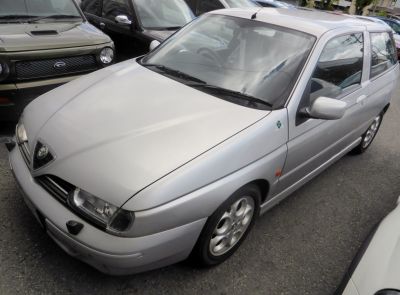
| Production: | 1999-2000 |
|---|---|
| Model Year: | 1999 |
| Length: | 4061 mm159.9 in |
| Width: | 1712 mm67.4 in |
| Height: | 1431 mm56.3 in |
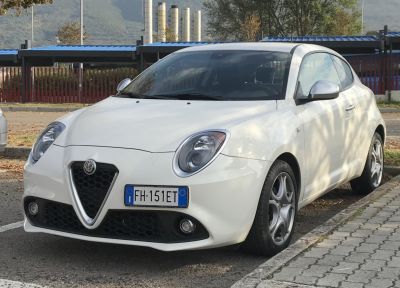
| Production: | 2016-2018 |
|---|---|
| Model Year: | 2016 |
| Length: | 4063 mm160.0 in |
| Width: | 1720 mm67.7 in |
| Height: | 1446 mm56.9 in |

| Production: | 2013-2016 |
|---|---|
| Model Year: | 2013 |
| Length: | 4063 mm160.0 in |
| Width: | 1720 mm67.7 in |
| Height: | 1446 mm56.9 in |

| Production: | 2008-2013 |
|---|---|
| Model Year: | 2008 |
| Length: | 4063 mm160.0 in |
| Width: | 1720 mm67.7 in |
| Height: | 1440-1446 mm56.7-56.9 in |
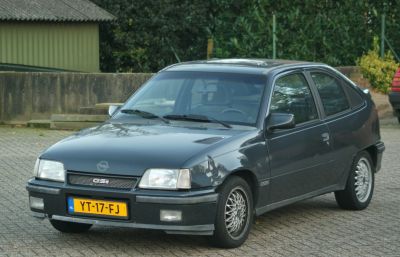
| Production: | 1984-1991 |
|---|---|
| Model Year: | 1984 |
| Length: | 3998 mm157.4 in |
| Width: | 1663-1669 mm65.5-65.7 in |
| Height: | 1400 mm55.1 in |
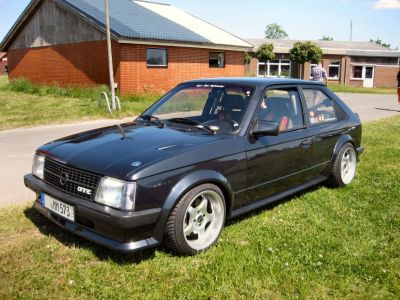
| Model Year: | 1979 |
|---|---|
| Length: | 3998 mm157.4 in |
| Width: | 1636 mm64.4 in |
| Height: | 1380 mm54.3 in |
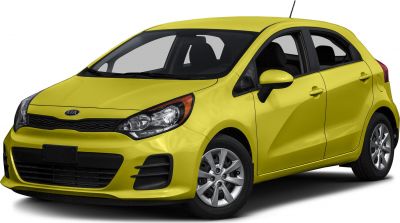
| Production: | 2015-2017 |
|---|---|
| Model Year: | 2015 |
| Length: | 4050 mm159.4 in |
| Width: | 1985 mm78.1 in |
| Height: | 1455 mm57.3 in |
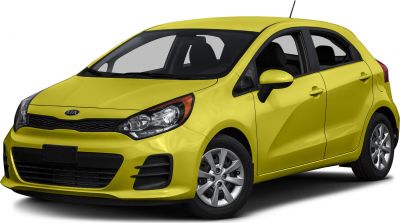
| Production: | 2015-2017 |
|---|---|
| Model Year: | 2015 |
| Length: | 4050 mm159.4 in |
| Width: | 1985 mm78.1 in |
| Height: | 1455 mm57.3 in |
